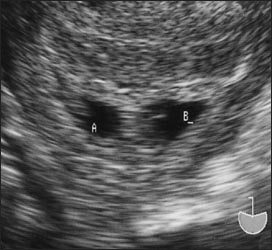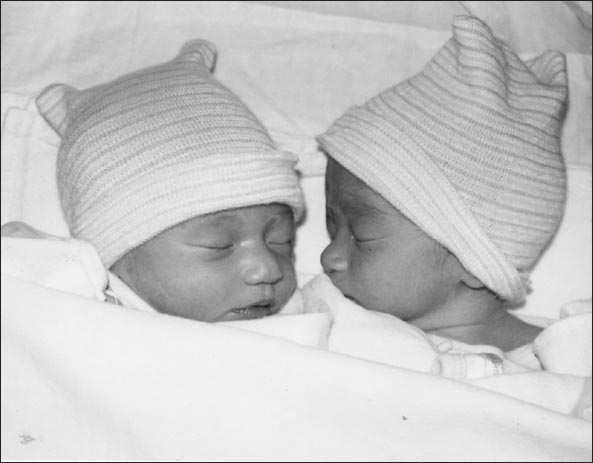


Copyright ⓒ 2014 John Sangwon Lee, MD., FAAP
Test tube fertilization 시험관 수정
Multiple eggs are collected at the same time from the ovaries of infertile women by the Ultrasound test. Place the eggs in a special solution that the eggs can live in and store the solution at a temperature of 37 degrees Celsius.
A few hours later, sperm collected from men are added to the solution. And put the mixed solution in the warmer for about 24 hours.
At this time, sperm and egg meet and fertilization takes place.
The solution with the fertilized eggs is then placed in the warmer for about a day. Then, the fertilized eggs are examined under a microscope.
Four to five fertilized eggs undergo cell division and become fertilized eggs with 2 to 6 cells.
These fertilized eggs are placed in the uterus through the vaginal cavity and cervix. After that, after an appropriate time has elapsed, use UltraSound to check whether the fertilized egg has implanted on the inner wall of the uterus, and check whether or not you are pregnant.
The probability of conceiving in this way is somewhat different for each pregnancy clinic, but it is said that in vitro fertilization can result in about 10-20% of full-term newborns.
Here is a summary of how to give birth to a test tube baby. Attempting to conceive with in vitro fertilization can involve many mental, emotional and economic problems, as well as patience and pain. It is also more likely to have multiple pregnancies.
Another method of pregnancy called GIFT (Gamete intrafallopian transfer) can be tried. This method is a method of collecting an egg from a woman’s ovary, collecting a man’s sperm, and putting it directly into the fallopian tube to try to conceive. It is said that the probability of becoming pregnant is about 30%. In addition, ZIFT (Zygote intrafallopian transfer) in vitro fertilized eggs are inserted into the fallopian tube to induce pregnancy.
For reference, when collecting eggs from the ovaries, local anesthesia is performed on the vagina of a woman, and a special injection needle is put into the ovaries through the vagina, and the eggs are collected from the ovaries. At this time, such treatment can be performed under the ultrasound test.
This amazing fertility method can make a woman or man with infertility a baby, but for some couples, trying to conceive in all ways will not conceive.
If they don’t have a baby of their own, the couple can live without a baby, adopt them, or sometimes have babies with other people’s fertilized eggs.
If you are unable to conceive for some reason, you may blame yourself or your spouse, and sometimes you may have problems with your marriage. My family is also raising twins through in vitro fertilization after conceiving and giving birth. It has a very strange feeling.

The ultrasound picture of fertilized egg

Here is a picture of a fertilized egg of his grandson and granddaughter. Picture of morula embryo of in vitro fertilized egg
Ultra-sound photograph of an in vitro fertilized egg implanted on the wall of the uterus and examined at 7 weeks of pregnancy. Twin pregnancy is seen here

Twins born from an in vitro fertilized egg.
Thank you for helping people around the world so much. Twin pregnancy is seen here It is reported that 40% of the causes of total infertility are on the female side, 40% on the male side, 10% on both men and women, and the remaining 10% are not sure of the cause.
Infertility caused by the male side is called male infertility, and infertility caused by the female side is called female infertility. Male infertility can be caused by a congenital or acquired problem in the testicles, or it can be caused by problems other than the testicles.
Hypothalamic diseases, pituitary gland abnormalities, etc. Chromosomal abnormalities such as Kreifelte syndrome or male Turner syndrome. Sheep anorexia, Sertoli cell syndrome (gonadotropin), testicular insufficiency caused by drugs or radiation, orchitis, testicular trauma, Testicular problems caused by rectified testicles, varicose veins in the male genital organs, testicular torsion, and aftereffects of hernia surgery.
Systemic diseases such as kidney disease, liver disease, diabetes, high blood pressure, and hemochromatosis
Excessive smoking or alcohol, exposure to radiation, pesticides, or pesticides, or taking drugs such as steroids Have a sexual intercourse disorder or Congenital obstruction of the vas deferens, obstruction of the vas deferens due to tuberculosis infection, sterilization of the vas deferens, etc.
When semen abnormalities are present or when anti-sperm antibodies are present in women etc Male infertility can occur due to such factors as.
Diagnosis
The male’s past and present medical history, family medical history, and sex life are summarized, a physical examination is performed, and a semen test is performed to find out if there is male infertility.
For reference, the testes of a normal adult are 4.5 cm long, 2.5 cm wide, and a volume of 20 cc is normal.
The number of sperm in the semen ejaculated at a time, how active the sperm are moving, how many strange sperm are among sperm, whether the man himself is allergic to his sperm, and the female’s self-weight of the sperm You can do a semen test to find out if you are allergic to Sperm, how well your sperm is swimming, etc.
Abnormally low sperm count can lead to infertility.
In this case, you can try to conceive by injecting sperm directly into the uterus through a tube. You can also try to get pregnant by fertilizing it in vitro and then placing the fertilized egg in the womb.
Men may be allergic to their sperm, and women may be allergic to men’s sperm, resulting in infertility. If you don’t get pregnant because of an allergy, you can try to get pregnant with medication or a fertilized egg in a test tube.
Depending on the cause of male infertility, you can try to get pregnant. Compared to female infertility, there are many restrictions on how to get pregnant when male infertility is present.
It is also important to prevent male infertility from occurring due to environmentally hazardous substances.
Frozen sperm can be injected into the uterus or into the abdominal cavity of the fallopian tube to make them pregnant. It can be fertilized in a test tube and the fertilized egg can be injected into the uterus to become pregnant.
One sperm can be injected directly into one egg to fertilize and then try to conceive.
You can also try to get pregnant by collecting sperm from your testicles and fertilizing them. When the vas deferens are blocked due to a vasectomy, etc., you can try to get pregnant with a fine vasectomy. Infertility caused by any cause on the female side is called female infertility.
The causes of female infertility are many, diverse and complex compared to the causes of male infertility. Pure gonadotropin deficiency (Kalman’s syndrome), pure luteinizing hormone deficiency, Net follicle-stimulating hormone deficiency, congenital hypogonadism syndrome, diseases of the pituitary gland, Pituitary hypofunction caused by tumors, surgery or radiation therapy, hyperprolactinemia, Hormonal abnormalities such as diabetes, adrenal gland abnormalities, hypothyroidism or hyperthyroidism Chromosomal abnormalities such as Turner syndrome Intercourse disorder due to vaginal stenosis, obstruction or defect, vaginal neurotic spasm, hymen obstruction, etc.
Ovulation disorders such as ovarian dysfunction, anovulation, ovarian polycystic syndrome, etc. Liver disease, kidney disease, mental disorder, central nervous system disorder, metabolic disorder, etc.
Congenital or acquired fallopian tube or fallopian tube obstruction or damage Due to endometritis or pelvic endometritis, etc. Uterine body abnormalities such as uterine tumors Due to abnormalities in the cervix and cervix, etc., etc
It can lead to female infertility.
try
A woman’s past and present family’s medical history, information on sex life, etc. are synthesized, a physical examination is performed, basic clinical tests such as urine tests, blood tests, blood type tests are performed, and other tests are also performed if necessary. Measure your basal body temperature to see when you will ovulate.
Laparoscopy is performed as necessary to determine the presence or absence of endometriosis in the abdominal cavity and the patency of the fallopian tubes.
The blood levels of hormones such as thyroid-stimulating hormone, breast milk secretion hormone, gonadotropin, and follicle-stimulating hormone are tested as needed to determine ovarian function and ovulation.
The fallopian tubes and fallopian tubes, which are connected to the fallopian tubes in the uterus, are examined with an X-ray examination of the fallopian tubes. In other words, if necessary, a contrast agent is put into the uterus to see if it is closed or adhered, and an X-ray examination is performed as necessary to see if the contrast agent can pass through the uterus and both fallopian tubes and enter the fallopian tube.
Infertility can result if there are sperm antibodies in the mucus secreted from the cervix that can reduce sperm’s ability to exercise and reduce fertility. If necessary, tests to check for the presence of such sperm antibodies are also performed.
Endometrial biopsy is done as needed to see if the endometrium responds properly to ovulation and hormones. Other tests can be done. Copyright ⓒ 2014 John Sangwon Lee, MD., FAAP
“부모도 반의사가 되어야 한다”-본 사이트의 내용은 여러분들의 의사로부터 얻은 정보와 진료를 대신할 수 없습니다.
“The information contained in this publication should not be used as a substitute for the medical care and advice of your doctor. There may be variations in treatment that your doctor may recommend based on individual facts and circumstances.
“Parental education is the best medicine.“